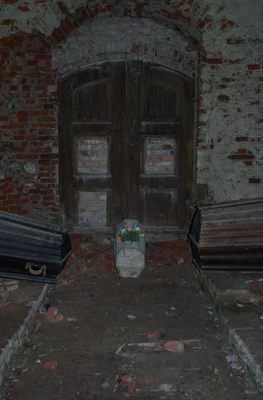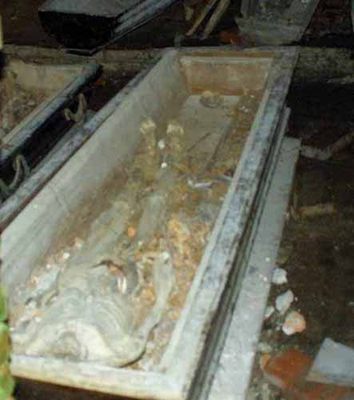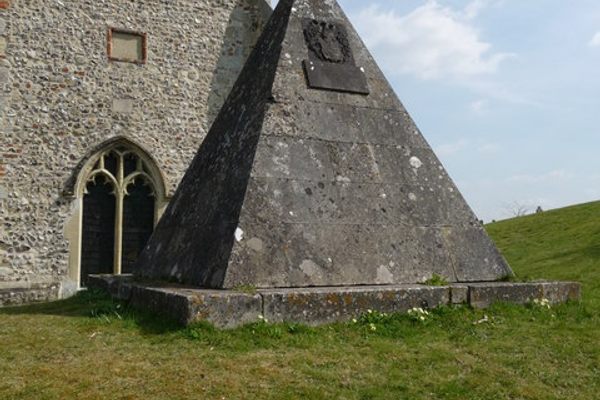About
When you close your eyes and imagine mummies lying within pyramids, ancient Egypt is likely the first thing that comes to mind. But after visiting this strange and obscure pyramid outside the northeastern Polish village of Rapa, you might find good reason to replace that well-worn image with a new, far less familiar one.
The Rapa Pyramid was built by Friedrich Heinrich Fahrenheit (also spelled Fahrenheid), an important official and nobleman for Imperial Eastern Prussia who was also an avid art collector and world traveler. Swept up in the contemporary fascination with ancient Egypt, he became obsessed with mummification and pharaonic beliefs of the afterlife.
Whether Friedrich actually tried his hand at ancient magic is unclear, but he was certainly intrigued enough to hire Bertel Thorvaldsen (a famous Danish sculptor of the time) to erect a massive family tomb in the shape of a miniature Egyptian pyramid just 5km away from his estate. Completed in 1811, the structure has a perfect square base with sides of 10.4m, a height of 15.9m, and an internal wall angle of 51°52’, which is identical to the Egyptian pyramids at Giza.
It wasn’t long before the vault was occupied. Just three years after its completion, Friedrich’s three-year-old daughter, Ninette, passed away and was laid to rest in the mausoleum. Over time, more family members were interred in the unusual crypt, until finally Friedrich himself was entombed in 1849.
During the final stages of World War II, the Fahrenheit family fled before advancing Soviet forces. The Red Army blasted open the walls of the mausoleum and opened the graves, cutting off the heads of the mummified corpses, smashing the coffins, and leaving the site to the mercy of elements.
Paradoxically, this abandonment probably saved the monument from destruction during the Communist era, and deepened the structure’s magical intrigue. Still in perfect condition when they were desecrated (despite the prevailing swampiness of the area), the decapitated mummies refused to decompose. People came far and wide to visit and photograph the bodies.
Mystics attribute the phenomenon to powerful energy fields, created by the intersection at the site of three ley lines and amplified by the tomb’s structure. This dynamic is similarly credited with keeping mosquitos and other bugs out of the marshy area.
Over time, the locals rebuilt the monument, but left the headless bodies on display for visitors to see. In 2008, after designating the site as a historic landmark, the Polish government put the Fahrenheit mummies back into closed coffins and sealed the entrance for good. Today, visitors peering through barred windows no longer see headless mummies and Eastern Front destruction, but rather four flower-covered coffins sitting neatly inside.
Related Tags
Know Before You Go
Getting to this area is not easy and requires your own vehicle. The easiest approach is from the 650. Turn off towards Rapa (signposted). Straight ahead through the woods you'll reach a sign for the pyramid some 8 kilometers from the main road. You can't park right at the approach path to the mausoleum but you come to a car park 200 yards past it, where you get ushered in and charged a small fee (payable in cash only).
Community Contributors
Added By
Published
November 17, 2016
Sources
- http://www.dark-tourism.com/index.php/15-countries/individual-chapters/541-fahrenheid-mausoleum-rapa-pyramid-poland
- http://vergessene-orte.blogspot.com/2010/02/die-pyramide-von-rapa-kleinangerapp.html
- http://www.poland.travel/en/inne-atrakcje-turystyczne/pyramid-in-rapa
- http://www.warsawvoice.pl/WVpage/pages/article.php/13628/article
- https://en.wikipedia.org/wiki/Rapa,_Poland
- https://de.wikipedia.org/wiki/Pyramide_in_Rapa































